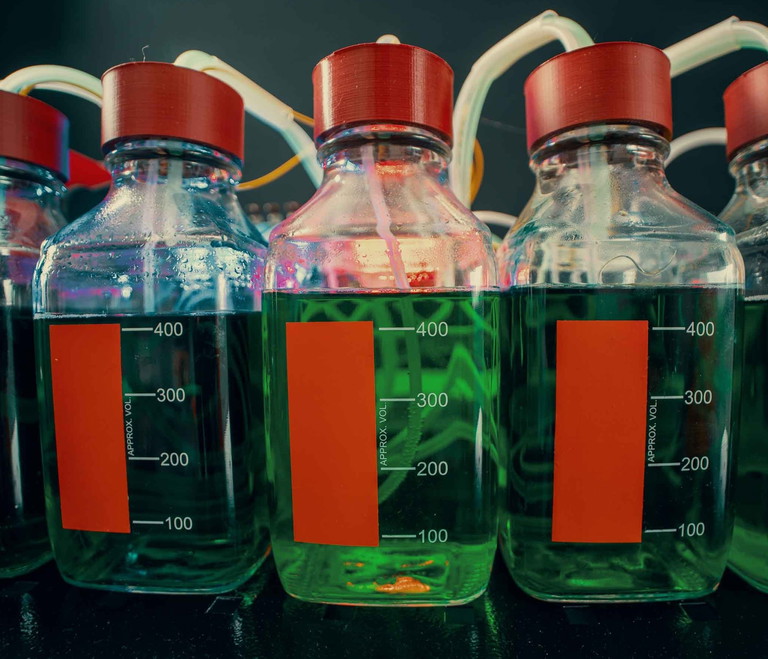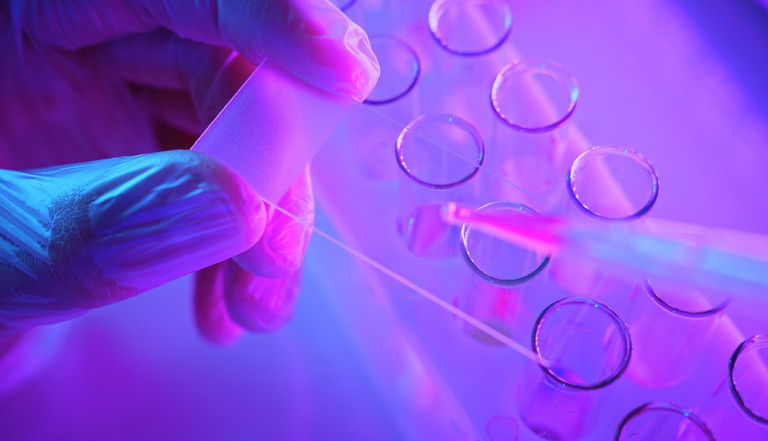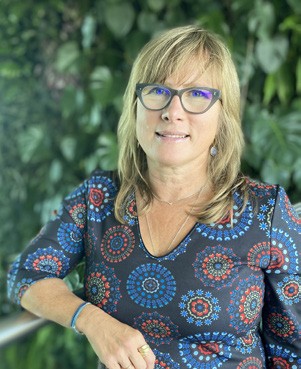Manufacturing: Biocatalysis
Advancing complex SM process development using biocatalysis
Biocatalysis is enhancing complex molecule process development. By merging the power of enzymes with chemical synthesis, scientists and manufacturers are addressing long-standing challenges in stereoselectivity, route complexity and sustainability
Reuben Carr and Masha Kononov at Ingenza
Biocatalysis – the use of enzymes to drive chemical reactions – is gaining traction in the pharmaceutical industry as a powerful means of enhancing stereo-and regioselectivity, simplifying chemical synthesis, improving process mass intensity (PMI) and reducing the environmental impact of drug production. However, this transition does not come without challenges. Issues like enzyme stability and activity, aqueous waste stream management and stringent regulatory requirements continue to present technical and operational hurdles. What are some opportunities and limitations of biocatalysis in modern drug substance development, and how are contract research, development and manufacturing organisations (CRDMOs) helping clients to meet today’s complex small molecule (SM) synthesis demands by offering integrated biocatalysis platforms?
Strategic advantages of biocatalysis
One of the most compelling benefits of biocatalysis is the ability to deliver exceptional precision in chemical transformations.1 Enzymes – nature’s own catalysts – are highly selective, often achieving exceptional levels of regio-, chemo- and enantioselectivity thanks to their finely tuned active sites.2 This precise control allows enzymes to work with challenging substrates or under non-standard conditions and, thanks to advances in enzyme engineering, they can be adapted to suit a wide range of reactions. For drug substance developers, this level of selectivity enables fewer purification steps, improved stereopurity, enhanced regulatory compliance and the ability to integrate multiple reactions into a single, streamlined process, simplifying operations and boosting efficiency.2
Enzymes also operate under mild, aqueous conditions without requiring high temperatures or harsh reagents.3 This not only helps to lower energy consumption and improve process safety, but also supports greener chemistry by lowering solvent use and avoiding heavy metal catalysts.4 Compared to traditional chemistry, enzymatic methods can significantly reduce PMI, making them attractive from both a cost and environmental perspective. As a result, biocatalysis is being increasingly recognised not only as a useful tool, but as a strategic advantage.
Adapting biocatalysts to drug substance production
Despite these benefits, integrating biocatalysis into manufacturing processes comes with several practical challenges. A primary issue is that enzymes have evolved to function in aqueous environments and within narrow operating ranges.5 Industrial processes, in contrast, often involve organic solvents, elevated or cryogenic temperatures, and extreme pH – conditions that can compromise enzyme stability and activity.5 Drug substances and intermediates may also degrade or behave unpredictably in enzyme-compatible media, limiting viable transformations. These issues are especially pronounced in multi-step syntheses, where switching between aqueous and non-aqueous steps can create bottlenecks. Ensuring compatibility between reaction conditions is essential, as mismatches may lead to lower yields, poor reproducibility or the need for complex downstream processing. This becomes even more critical at scale, where small shifts in pH, temperature or solubility can significantly affect process robustness and cost efficiency.
To overcome these limitations, many CRDMOs now offer biocatalysis as a platform service, combining enzyme discovery, optimisation and process integration. Platform-based CRDMOs employ advanced enzyme engineering strategies – including directed evolution, computational protein design and high throughput screening – to tailor enzymes for industrial needs and more demanding conditions.6,7,8 These approaches make it easier to incorporate biocatalysis across a wider range of pharmaceutical workflows.
Engineering catalysts for purpose and scale
Even with broader process compatibility, natural enzymes are not always well suited to industrial use, particularly for non-natural substrates or novel reactions.5 Even when a promising enzyme performs well in early-stage testing, it may still fall short in terms of productivity, specificity or robustness during scale-up.9 This challenge is especially relevant in pharma, where tight timelines and limited material availability demand reliable performance from the outset.

This enables tailored enzymes to be implemented earlier in the development process, reducing risk and making biocatalysis more viable under real-world manufacturing pressures.
A key limitation lies in enzyme designability; how easily traits like activity, stability or selectivity can be fine-tuned for a specific process. Improving these features typically requires multiple rounds of mutagenesis, screening and optimisation through directed evolution, rational design or a combination of both.10 Without the dedicated infrastructure and capacity to support these resource-intensive processes, many developers default to traditional chemistry, despite the potential long-term benefits of biocatalysis.
Platform-based CRDMOs help to bridge this gap with modular, scalable workflows that accelerate enzyme optimisation. By combining high throughput screening, structure-guided computational design and diverse enzyme libraries, they can streamline the design-build-test-learn cycle that underpins successful biocatalyst development.
Addressing adoption and cultural barriers
Alongside the scientific and technical considerations, cultural factors can also slow the adoption of biocatalysis in pharmaceutical development. In many organisations – particularly smaller companies and start-ups – process development teams are accustomed to well-established chemical synthesis methods. This familiarity can lead to a ‘good enough’ mindset, where the question becomes: ‘If the process works, why change it?’ While understandable, this approach can discourage the uptake of new technologies, and may lead to scalability problems, inconsistent yields and higher risk during later stages of development.
Platform-based CRDMOs help to overcome this reluctance by offering fully integrated solutions that place biocatalysis at the heart of process design. By combining route planning, enzyme expertise and validated workflows, they enable early process optimisation, reduce downstream risks and accelerate development timelines, making the case for change more compelling and less disruptive.

Biocatalysis in natural product synthesis
Another way to accelerate adoption of biocatalysis in drug development is to focus on areas where this approach offers a clear advantage over conventional chemistry. One area is the synthesis of SM inspired by natural products, which remain a pillar of modern drug discovery. Many clinical candidates and approved drugs retain features of their natural counterparts, but their complex structures often make chemical synthesis challenging and costly. Biocatalysis can shorten these routes, improve stereocontrol and operate under milder, greener conditions, making large-scale production more feasible.
For instance, islatravir – a nucleoside analogue inspired by ribose sugars and now in phase 3 trials for HIV prevention and treatment – is manufactured using a multi-enzyme cascade of engineered phosphorylases, kinases and oxidases to assemble the chiral sugar and couple it to the nucleobase in far fewer steps than traditional synthesis, achieving high stereoselectivity and a lower environmental footprint.11 Other examples of natural product-derived therapeutics include: artemisinin derivatives, antimalarial drugs produced at scale via engineered yeast; paclitaxel analogues, anti-cancer agents created through site-specific enzymatic tailoring of plant-derived precursors; and erythromycin derivatives, antibiotic medicines generated using glycosyltransferase-mediated sugar modifications.12,13,14
Advances in enzyme engineering, cascade design and strain development now allow these complex scaffolds to be manufactured at scale using whole-cell or cell-free systems. CRDMOs with integrated biocatalysis capabilities can support this by developing tailored enzymes and multi-step cascades that make commercial-scale production more efficient, sustainable and cost-effective.
Preventing and managing side reactions
While biocatalysis offers clear benefits for complex, chiral and natural product-inspired molecules, its successful implementation still requires attention to potential pitfalls such as unintended reactivity and off-target transformations. Enzymes can catalyse unintended reactions, especially when substrates have multiple functional groups.15 These off-target effects can reduce yields, introduce purification complications and, in some cases, pose safety concerns. Even subtle substrate modifications may trigger unexpected reactivity or shifts in enzyme selectivity. CRDMOs can mitigate these risks with predictive tools, substrate databases and analytical platforms. A broad screening strategy will allow early detection of side products, giving teams time to refine enzyme or reaction choices before issues escalate.
The role of CRDMO platform technologies
Platform-based CRDMOs offer the integrated infrastructure needed to unlock the full potential of biocatalysis in pharmaceutical development. Their capabilities span the entire development life cycle, including:10
• Rapid screening of off-the-shelf enzyme libraries
• Early-stage feasibility testing to assess reaction performance and scale-up potential
• Process analytical technology for real-time monitoring and control
• Process optimisation using quality by design principles
• Biocatalyst discovery and engineering, supported by flexible host system engineering for optimal enzyme expression and computational and artificial intelligence-assisted enzyme design, using codon optimisation, structural modelling and directed evolution
• Hybrid process development combining enzymatic and chemical steps
• Material manufacturing for development and production needs
• Technology transfer and intellectual property support to ensure smooth project handover.
By combining these capabilities into a cohesive platform, CRDMOs simplify biocatalysis implementation, enabling more efficient, robust and scalable enzymatic synthesis for drug substance development and production.
Paving the way for biocatalysis in pharma development
Biocatalysis has evolved from a specialist tool into a powerful strategy for complex SM synthesis, offering improved selectivity, efficiency and sustainability – particularly for stereochemically rich molecules, heterocyclic scaffolds and functionalised intermediates. However, achieving widespread adoption of biocatalysis still depends on overcoming key scientific and technical hurdles. Platform-based CRDMOs are driving this progress, combining enzyme expertise with integrated development capabilities to help turn biocatalysis into a scalable, reliable and commercially viable option for modern pharmaceutical manufacturing.
References
- Buller R et al (2023), ‘From nature to industry: Harnessing Enzymes for biocatalysis’, Science, 382, 6673
- Winkler C K et al (2021), ‘Power of biocatalysis for organic synthesis’, ACS Central Science, 7(1), 55-71
- Nelsestuen G L (1995), ‘How enzymes work’, Principles of Medical Biology, 1, Elsevier, 25-41
- Sheldon R A (2022), ‘Biocatalysis, solvents, and green metrics in sustainable chemistry’, in Foundations and Frontiers in Enzymology: Biocatalysis in Green Solvents, Academic Press, 1-22
- van Schie M M et al (2021), ‘Applied biocatalysis beyond just buffers – from aqueous to unconventional media. options and guidelines’, Green Chemistry, 23(9), 3191-3206
- Cherry J R et al (2003), ‘Directed evolution of Industrial Enzymes: An update’, Current Opinion in Biotechnology, 14(4), 438-443
- Son A et al (2024), ‘Integrating computational design and experimental approaches for next-generation Biologics’, Biomolecules, 14(9), 1073
- Cruz R (2024), ‘CRDMOs Redefining Drug Substance Development with Platform Technologies’, International Biopharma, 7(4), 40-42
- Wu S et al (2020), ‘Biocatalysis: Enzymatic synthesis for industrial applications’, Angewandte Chemie International Edition, 60(1), 88-119
- Song Z et al (2023), ‘Rational design of enzyme activity and enantioselectivity’, Frontiers in Bioengineering and Biotechnology, 11, 1129149
- Huffman M A et al (2019), ‘Design of an in vitro biocatalytic cascade for the manufacture of islatravir’, Science, 366(6470), 1255-1259
- Oguri H (2021), ‘Synthesis and structural diversification of artemisinins towards the generation of potent antimalarial agents’, Chemistry Letters, 50(5), 924-937
- Tong Y et al (2022), ‘Biosynthesis of paclitaxel using synthetic biology,’ Phytochemistry Reviews, 21, 863-877
- Moncrieffe MC et al (2012), ‘Structure of the glycosyltransferase eryciii in complex with its activating P450 homologue ERYCII’, Journal of Molecular Biology, 415(1), 92-101
- Arora B et al (2014), ‘Enzyme promiscuity: Using the dark side of enzyme specificity in white biotechnology’, Sustainable Chemical Processes, 2(1), 25

Reuben Carr PhD is head of Chemical Biology at Ingenza Ltd. He has been instrumental in advancing the company’s proprietary bioprocess technologies – including biocatalysis – since 2004, leading projects spanning SMs, medical diagnostics, biobased chemicals and carbon capture. He is extremely passionate about chemical, life and biomedical sciences, and has a strong track record of delivering successful projects, building partnerships and mentoring scientific teams.

Masha Kononov is director of Business Development at Ingenza Ltd. She holds a Master’s degree in Molecular Biology and has over 15 years of experience guiding strategic partnerships across the pharmaceutical and life sciences industries. Her work focuses on advancing platform technologies that support the efficient development of complex therapeutics.